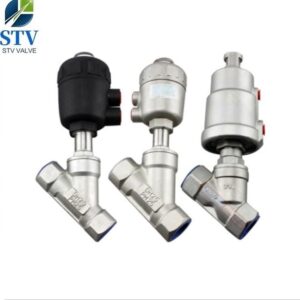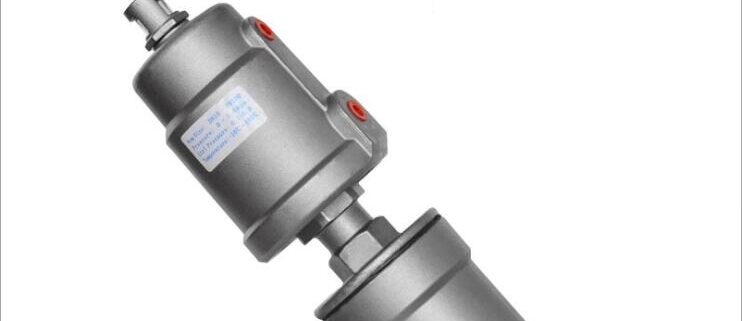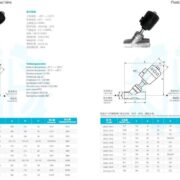What is an Angle seat Valve?
Angle seat Valves are manually controlled valves with outlet apertures that are at right angles to their inlet holes and can be used to control the flow of fluids through pipes. Angle valves are a type of flow control device in which fluids exit at a right angle to their entrance. When looking for the best angle valves, two factors should be taken into account: materials and operation or method of use. Angle Valves are typically composed of a variety of materials, including stainless steel, brass, and plastic (PVC), among others, with brass being the most reliable and durable due to metals’ superior durability over plastic. Furthermore, it is the most crucial part of operation or usage. A quarter-turn or multi-turn fitting is generally used to operate an Angle Valve. To begin, you must first learn how to use it. Quarter-turn valves are currently more reliable and common than multi-turn valves.
Working principle of pneumatic angle seat valve
The valve body of pneumatic angle seat valve is generally cast from stainless steel and copper materials, and the sealing material is made of PTFE or high temperature resistant materials; It can be used for the circulation of most gases, liquids, steam and corrosive materials. It is equipped with a radiator to protect the actuator and ensure its long service life.
The pneumatic angle seat valve can save space by keeping the flow rate. It uses a single acting pneumatic actuator with spring safety protection to guide the operation. It should be normally open or closed when in use. A spring is added at the handle. The lever type single side spring is used as the actual principle. When the handle is opened, the spring is compressed, and when the handle is released, the spring pushes the handle to close. This is the principle of automatic return by the spring.
The pneumatic angle seat valve uses compressed air to push multiple groups of combined pneumatic pistons in the actuator to move, transfer force to the beam and inner curve track, drive the air core spindle to rotate, and the compressed air disc is sent to each cylinder to change the inlet and outlet positions to change the spindle rotation direction. According to the requirements of the rotating torque required by the load, the number of cylinder combinations can be adjusted to drive the load to work. The two position five way solenoid valve is usually used together with the double acting pneumatic actuator. The two positions are controllable: open close. The five way valve has five channels for ventilation, one of which is connected to the air source, two of which are connected to the inlet and outlet of the external air chamber of the double acting cylinder, and two of which are connected to the inlet and outlet of the internal air chamber.

Need industrial equipment, parts, or services? Submit an RFQ and get quick quotes.






